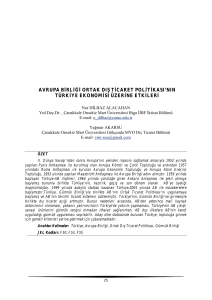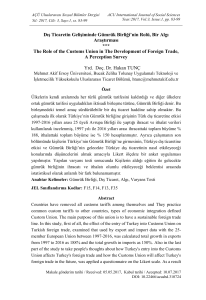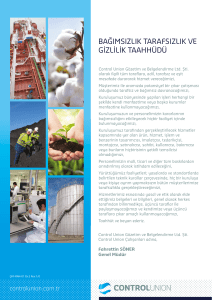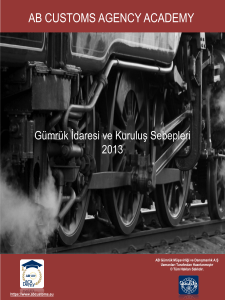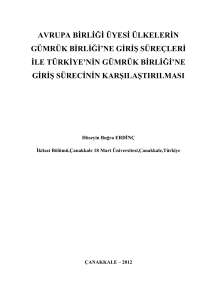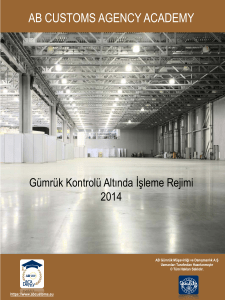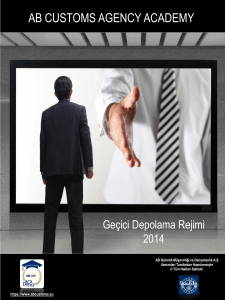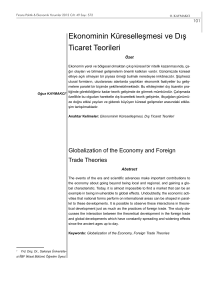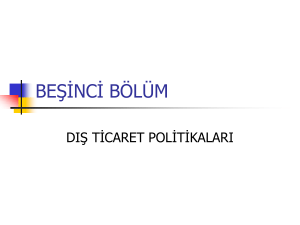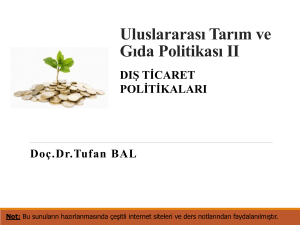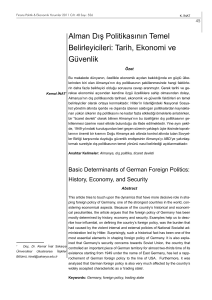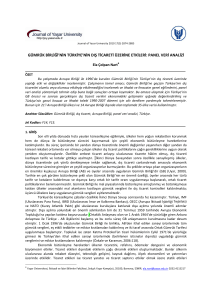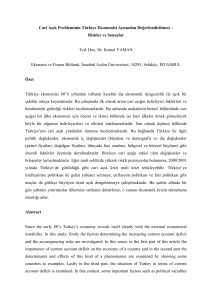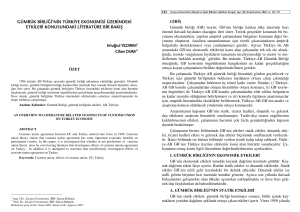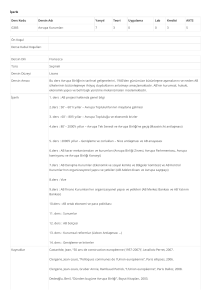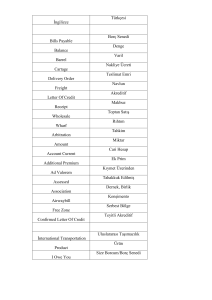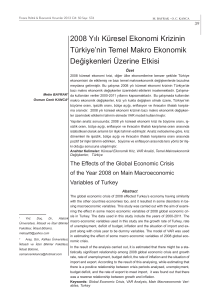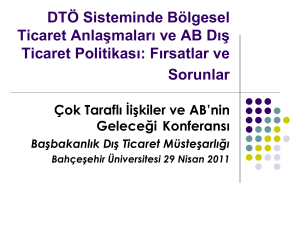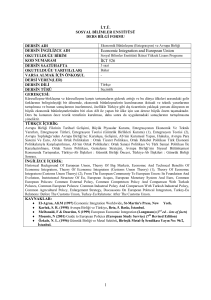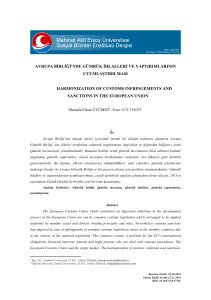Türkiye Ekonomisinde Cari Açık Sorunu ve Nedenleri
advertisement
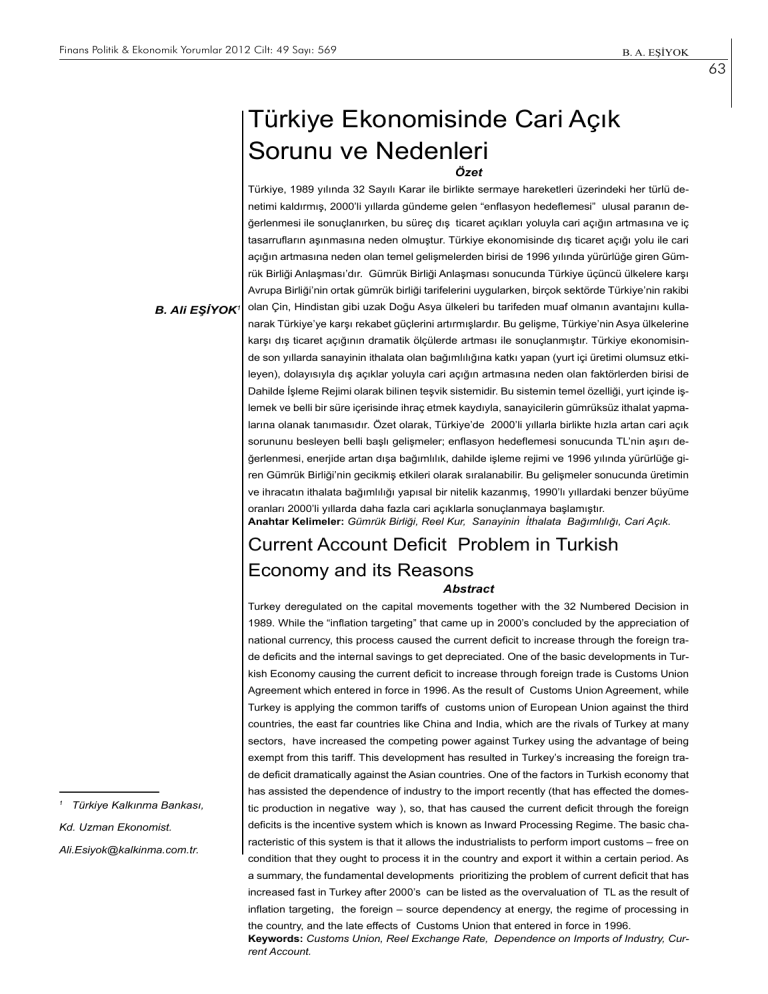
Finans Politik & Ekonomik Yorumlar 2012 Cilt: 49 Sayı: 569 B. A. EŞİYOK 63 Türkiye Ekonomisinde Cari Açık Sorunu ve Nedenleri Özet Türkiye, 1989 yılında 32 Sayılı Karar ile birlikte sermaye hareketleri üzerindeki her türlü denetimi kaldırmış, 2000’li yıllarda gündeme gelen “enflasyon hedeflemesi” ulusal paranın değerlenmesi ile sonuçlanırken, bu süreç dış ticaret açıkları yoluyla cari açığın artmasına ve iç tasarrufların aşınmasına neden olmuştur. Türkiye ekonomisinde dış ticaret açığı yolu ile cari açığın artmasına neden olan temel gelişmelerden birisi de 1996 yılında yürürlüğe giren Gümrük Birliği Anlaşması’dır. Gümrük Birliği Anlaşması sonucunda Türkiye üçüncü ülkelere karşı Avrupa Birliği’nin ortak gümrük birliği tarifelerini uygularken, birçok sektörde Türkiye’nin rakibi B. Ali EŞİYOK olan Çin, Hindistan gibi uzak Doğu Asya ülkeleri bu tarifeden muaf olmanın avantajını kulla1 narak Türkiye’ye karşı rekabet güçlerini artırmışlardır. Bu gelişme, Türkiye’nin Asya ülkelerine karşı dış ticaret açığının dramatik ölçülerde artması ile sonuçlanmıştır. Türkiye ekonomisinde son yıllarda sanayinin ithalata olan bağımlılığına katkı yapan (yurt içi üretimi olumsuz etkileyen), dolayısıyla dış açıklar yoluyla cari açığın artmasına neden olan faktörlerden birisi de Dahilde İşleme Rejimi olarak bilinen teşvik sistemidir. Bu sistemin temel özelliği, yurt içinde işlemek ve belli bir süre içerisinde ihraç etmek kaydıyla, sanayicilerin gümrüksüz ithalat yapmalarına olanak tanımasıdır. Özet olarak, Türkiye’de 2000’li yıllarla birlikte hızla artan cari açık sorununu besleyen belli başlı gelişmeler; enflasyon hedeflemesi sonucunda TL’nin aşırı değerlenmesi, enerjide artan dışa bağımlılık, dahilde işleme rejimi ve 1996 yılında yürürlüğe giren Gümrük Birliği’nin gecikmiş etkileri olarak sıralanabilir. Bu gelişmeler sonucunda üretimin ve ihracatın ithalata bağımlılığı yapısal bir nitelik kazanmış, 1990’lı yıllardaki benzer büyüme oranları 2000’li yıllarda daha fazla cari açıklarla sonuçlanmaya başlamıştır. Anahtar Kelimeler: Gümrük Birliği, Reel Kur, Sanayinin İthalata Bağımlılığı, Cari Açık. Current Account Deficit Problem in Turkish Economy and its Reasons Abstract Turkey deregulated on the capital movements together with the 32 Numbered Decision in 1989. While the “inflation targeting” that came up in 2000’s concluded by the appreciation of national currency, this process caused the current deficit to increase through the foreign trade deficits and the internal savings to get depreciated. One of the basic developments in Turkish Economy causing the current deficit to increase through foreign trade is Customs Union Agreement which entered in force in 1996. As the result of Customs Union Agreement, while Turkey is applying the common tariffs of customs union of European Union against the third countries, the east far countries like China and India, which are the rivals of Turkey at many sectors, have increased the competing power against Turkey using the advantage of being exempt from this tariff. This development has resulted in Turkey’s increasing the foreign trade deficit dramatically against the Asian countries. One of the factors in Turkish economy that has assisted the dependence of industry to the import recently (that has effected the domes1 Türkiye Kalkınma Bankası, Kd. Uzman Ekonomist. [email protected]. tic production in negative way ), so, that has caused the current deficit through the foreign deficits is the incentive system which is known as Inward Processing Regime. The basic characteristic of this system is that it allows the industrialists to perform import customs – free on condition that they ought to process it in the country and export it within a certain period. As a summary, the fundamental developments prioritizing the problem of current deficit that has increased fast in Turkey after 2000’s can be listed as the overvaluation of TL as the result of inflation targeting, the foreign – source dependency at energy, the regime of processing in the country, and the late effects of Customs Union that entered in force in 1996. Keywords: Customs Union, Reel Exchange Rate, Dependence on Imports of Industry, Current Account.
